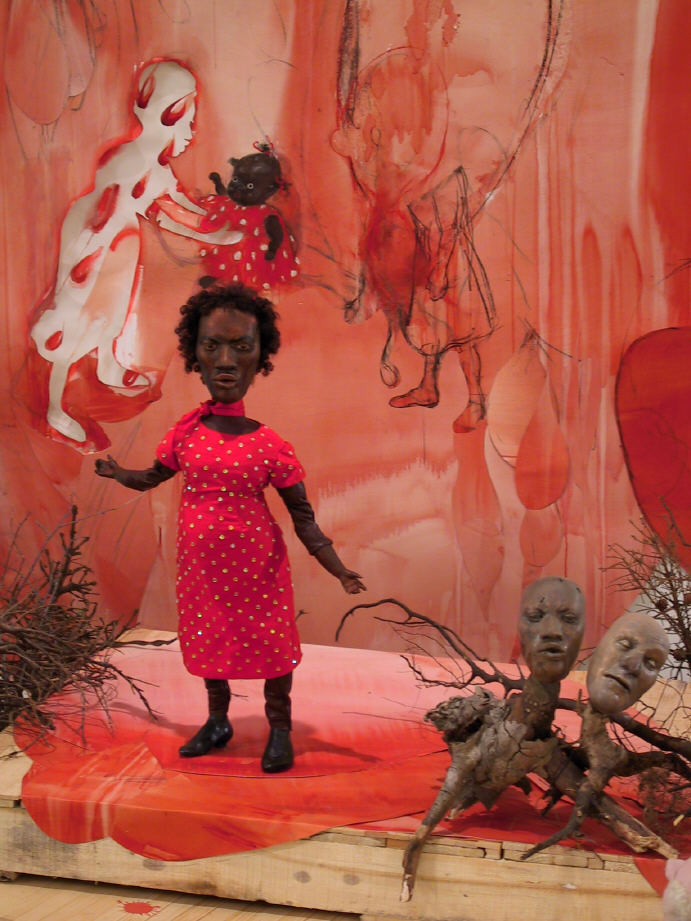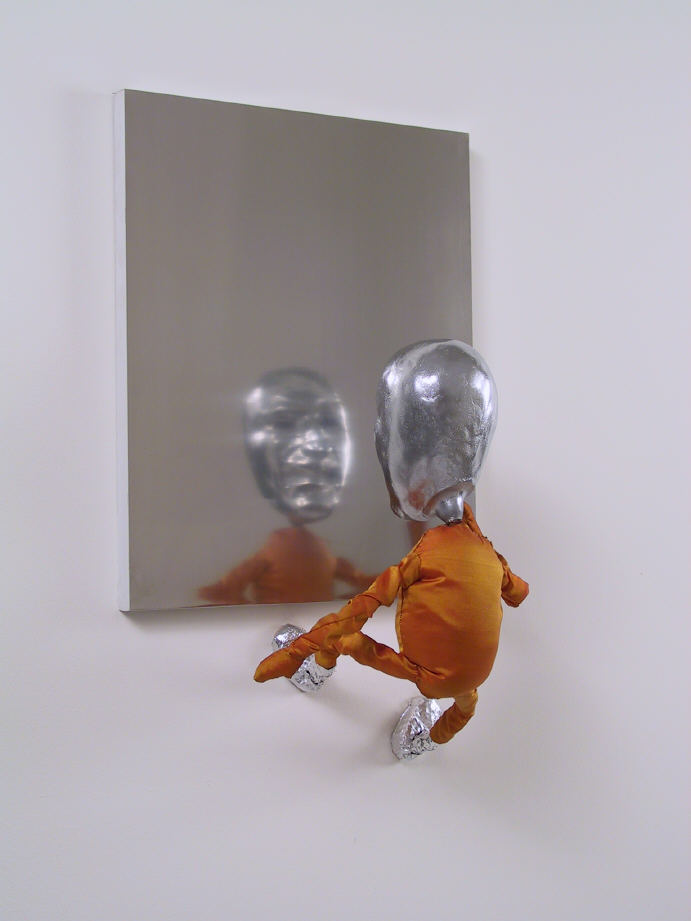Art Review: Small in a Big World–Stacey Davidson
Stacey Davidson's show at Franklin Art Works (1021 E. Franklin, through Nov. 8) is resonant. Michael Fallon wonders, how much does one have to know about an artist's intentions to establish the context for their work?


At long last we’re living in an age when what was formerly science fiction–cloning, gene splicing, cars that run on water–has moved out of the pulp pages and into the realm of the real. Isn’t it time, though, for someone to step up and really start to take advantage of these technologies? Why piddle around, for instance, with glow-in-the-dark bunnies (created by splicing jellyfish and rabbit genes), or bacteria that eat up oil slicks or whatever, when so much more is possible? For instance, just off the top of my head, I think a program to gene-splice the DNA of history’s greatest artists to create new hybrid über-artists for the 21st century would be something worth exploring. Think about it: What masterpieces would a freakish Michelangelo-Vincent Van Gogh combination create, for example; or what would happen if you could combine the volatile creative spirits of Diane Arbus and Jackson Pollock? Let’s think outside the box a bit, people, and really make some waves with this science stuff.
But then again, maybe someone secretly has already been working on such a project. I think it’s entirely possible that Stacey Davidson is evidence of an evil scientist’s splicing of Kara Walker’s DNA with that of Matthew Barney. Davidson’s current show at Franklin Art Works, “Small in a Big World,” looks like both of these artists.
Davidson’s work resembles Walker’s silhouettes in both superficial and more complex ways. Obvious references to racial stereotypes and to black self-image are here, and the artist also uses Walker’s visual strategies–flat silhouette images, obliterating the picture frame and moving visual elements directly onto the wall, and playing with obvious caricatures. At the same time, her work resembles Barney’s in its absurd theatricality: funny and sometimes grotesque handmade eighteen-inch-high dolls interacting with painting-like objects. Like Barney, she gives us no ready access to her symbolic and baroque personal imagery (a character named “Goatlegs”, a recurring doll named “Stinky”). It’s all a mind-bending puzzle, man, with very few clues to help us keep things square, just like Barney likes it.
Fortunately, Davidson has in common with both artists the ability to create a convincing visual universe out of obscure personal imagery. The colors and composition of these twelve separate pieces are realized out of the works’ own resources, so that we only pause to question them in passing. I did want to be privy to the secrets of the doll world–why a doll named Anna is painted silver and struggling to climb a stainless-steel canvas, for example–but I felt this curiosity in a pleasant sort of way. Perhaps this is because the dolls feel “real.” They are positioned in evocative poses; they have convincing gestures, unique facial expressions, and indeed seem to be full characters living out their internal dreams. In general, the dolls seem to be struggling in some obscure way with an associated painting or drawing or a set of issues we can only guess at. The sort of push-pull between the image fields on the walls and the tactile objecthood of the dolls emerging from the walls is constantly entertaining to look at, even if I don’t fully know what it means.
All of this culminates in the exhibition with a central set-piece that operates as the show’s core. Its title is as complicated as the image itself, and indicates anew the baroque nature of Davidson’s work: “And now, Anna, Goatlegs and the Man with the Painted Face, along with Some Unsettled Souls, present a play to honor this, our first national (long-awaited) Period of Grief. Come, open hearts and listen.” Oddly, the work lives up to the ponderous title. On several wooden platforms dolls stand and gesture to an audience of one doll who sits the platforms’ foot. Strange moaning doll heads are stuck on the end of real tree branches. Behind the pageant is a backdrop awash in oozy red paint on paper, and a silhouette image of a headless woman holding a black doll baby in a baby-doll dress is incised in the ruddy color.
What could all of this mean? Are we supposed to know? Well, it’s clear that race is important. Two of the prominent characters are pink-skinned, dressed in aristocratic clothing, and somewhat repulsive (one of them is half-man, half-goat: he must be “Goatlegs”). Meanwhile, the doll called “Anna” stands defiant and proud at the top of the mound of platforms. The audience is a yellow-skinned woman who has seemingly just happened upon the scene–a tiny doll suitcase at her side as she sits and watches. Perhaps this is a stand-in for the artist. Perhaps it is someone else who simply is getting the full story about the national “Period of Grief”. Is it a pageant concerning adoption, about the mixed race of the audience doll, or is it a wider indictment of race relations?
The puzzle itself is a payoff. What is obvious, through the bizarre theater, the expressive colors, the horrifying heads on sticks, is that there is torment that drives the artist to make this work. For me that is enough to know–that the artist is driven and doesn’t have easy answers for the dilemmas that disturb her.
Photos: Stacey Davidson